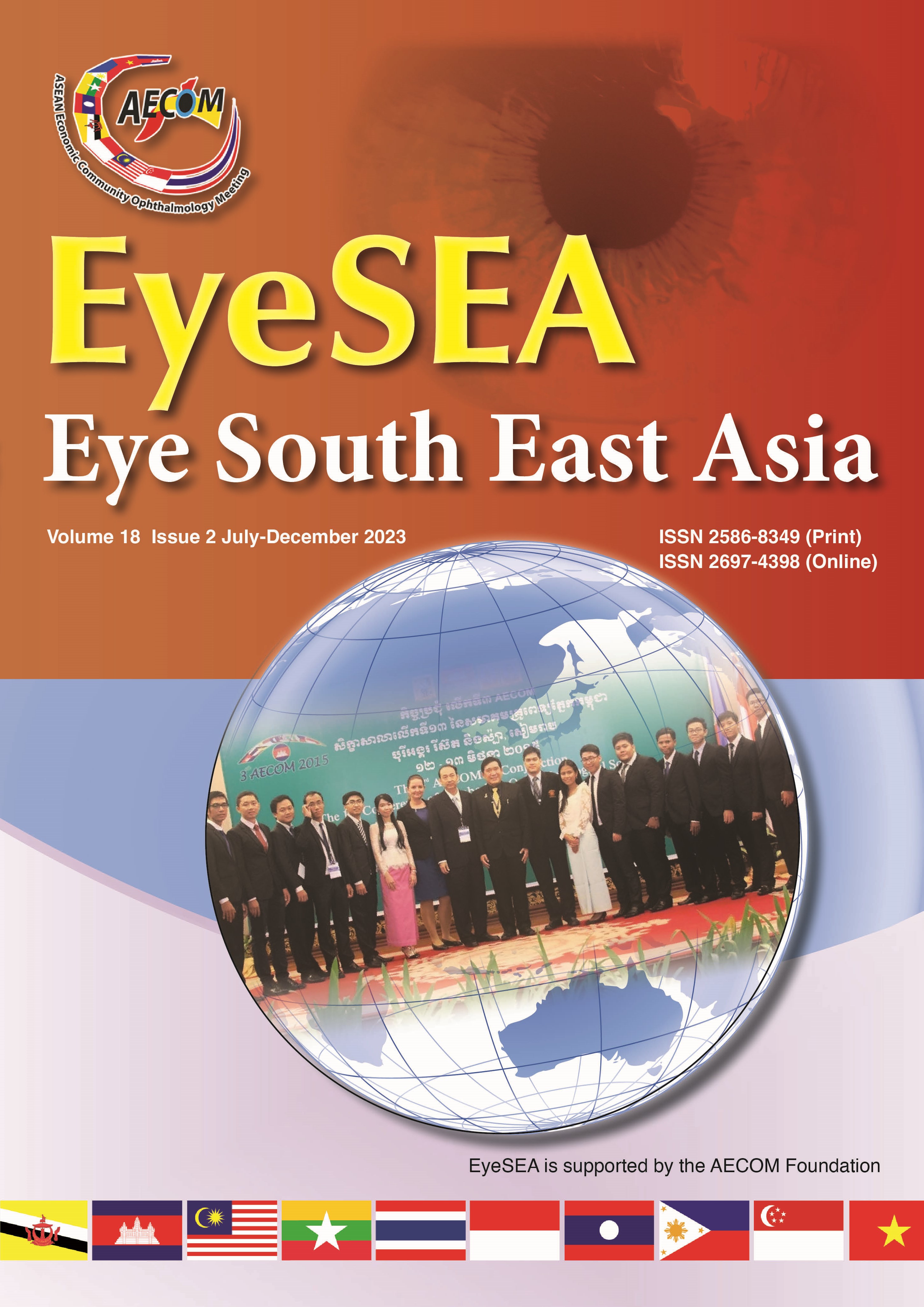Detection of Covid-19 with Ocular signs, Symptoms, and Rapid Test Standard Q on the Conjunctiva and Tear Film
Main Article Content
Abstract
Background: Coronavirus infection (Covid-19) is a recent pandemic outbreak, characterized by transmission through body secretions. Research indicates the presence of the infection in the Oropharynx2, encompassing the nasopharynx, establishing a connection to the tear duct pathway (nasolacrimal system). Several studies have reported the presence of the infection in the tears and conjunctival tissues3. The objective of this study is to determine the detection of Covid-19 from conjunctival secretions and lacrimal ducts using standard rapid antigen tests. Additionally, the study aims to explore ocular manifestations in individuals diagnosed with Covid-19 using RT-PCR.
Setting: THABO CROWN PRINCE HOSPITAL
Study design: Prospective cohort study
Methodology: Data were collected from 414 patients at risk of contracting Covid-19. A total of 414 patients exhibiting respiratory symptoms indicative of coronavirus disease (Covid-19) received a diagnosis of SARS-CoV-2 through RT-PCR in the PCR group. Subsequently, these subjects underwent evaluation via standard rapid antigen test using conjunctival secretions. Additionally, an ophthalmologist conducted examinations using a handheld slit-lamp microscope.
Results: The sample group consisted of 414 individuals that exhibit symptoms of entry and susceptibility to Covid-19. Among them, nasal swab RT-PCR, which was considered the gold standard, was performed on 212 people, constituting an incidence rate of 51.21% (95% CI: 46.39-56.02%). The occurrence of Covid-19 in lacrimal secretion was observed in 10 cases (2.42%), with 7 cases (3.30%) identifed in the nasal swab RT-PCR positive subgroup. Upon statistical analysis, no statistically signifcant difference was discerned (p-value= 0.290). The sensitivity for the intraocular diagnostic test was determined to be 3.30% (95% CI: 1.58-5.02%). Notably, this study revealed no transmission between medical personnel and patients, and there were no reported fatalities.
Conclusion: Within the high-risk group, respiratory symptoms associated with coronavirus (Covid-19) infection can manifest through tears. The diagnosis of Covid-19 was established through both positive and negative results in nasal swabs RT-PCR tests. Consequently, the intraocular Antigen Test Kit (ATK) is deemed inappropriate as a diagnostic tool. Nonetheless, it serves a valuable role in affrming the potential for pathogen contamination in the tear region. Thus, caution is warranted when medical personnel are required to make contact with the patient’s conjunctiva and tears.
Article Details

This work is licensed under a Creative Commons Attribution-NonCommercial-NoDerivatives 4.0 International License.
References
Tong T, Lai TS. The severe acute respiratory syndrome coronavirus in tears. Br J Ophthalmol. 2005;89(3):392. doi:10.1136/bjo.2004.054130.
Ivan Seah & Rupesh Agrawal (2020) Can the Coronavirus Disease 2019 (COVID-19) Affect the Eyes? A Review of Coronaviruses and Ocular Implications in Humans and Animals, Ocular Immunology and Inflammation, 28:3, 391-395, DOI: 10.1080/09273948.2020.1738501
Lu CW, Liu XF, Jia ZF. 2019-nCoV transmission through the ocular surface must not be ignored. Lancet. 2020;395(10224):e39. doi:10.1016/S0140-6736(20)30313-5.
Wan Y, Shang J, Graham R, Baric RS, Li F. Receptor recognition by novel coronavirus from Wuhan: an analysis based on decade-long structural studies of SARS. J Virol. 2020. epub ahead of print. doi:10.1128/JVI.00127-20.
Guan WJ, Ni ZY, Hu Y, et al. Clinical characteristics of coronavirus disease 2019 in China. N Engl J Med. 2020;382(18):1708–1720.
Santarpia JL, Rivera DN, Herrera V, et al. Transmission potential of SARS-CoV-2 in viral shedding observed at the university of nebraska medical center. medRxiv. 2020. https://doi.org/10.1101/2020.03.23.20039446. Accessed April 4, 2020
Wu P, Duan F, Luo C, Liu Q, Qu X, Liang L, et al. Characteristics of ocular findings of patients with coronavirus disease 2019 (COVID-19) in Hubei Province, China. JAMA Ophthalmol. 2020;138:575–8.
Ulhaq ZS, Soraya GV.The prevalence of ophthalmic manifestations in COVID-19 and the diagnostic value of ocular tissue/fluid.Graefes Arch Clin Exp Ophthalmol.2020;258:1351–2.
Ali MJ. The SARS-CoV-2, tears, and ocular surface debate: What we know and what we need to know. Indian J Ophthalmol. 2020;68:1245–6.


